Jaipur, the capital city of Rajasthan, is reputably known as one of the ten most beautiful cities of India. Steep in history and heritage, the medieval charm of the pink city beckons visitors to relive the bygone era and marvel the ancient grandeur.
A mere 11km from Jaipur, Amber Fort is a magnet for history buffs, lovers of fine architecture or sightseeing visitors who just want to soak up the regal atmosphere amidst the rugged Aravalli range of hills running across western India and Eastern Pakistan. Also known as Amer Fort, the must-see attraction spells the saga of Rajput and Mughal.
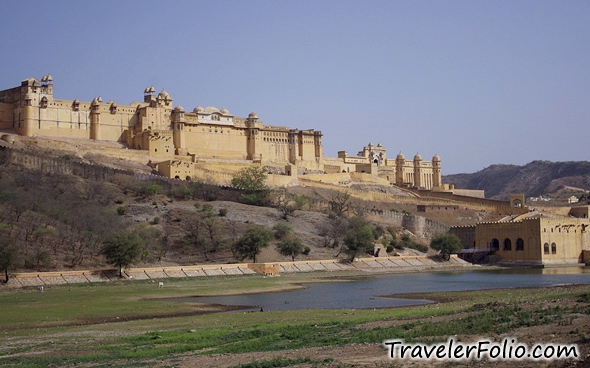
Built in red sandstone and white marble, the 16th century Amber Fort encompasses temples, gardens and palaces.
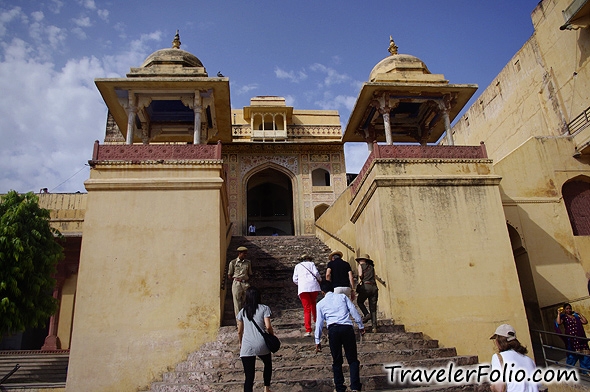
According to our guide from ITC‘s International Travel House, a multi-award winning travel operator in India, the Rajput Maharaja Man Singh (the king) at that time decided to construct Amer Palace to provide jobs for the people who couldn’t grow crops without good rain in the dry land. When the construction work was over, the workers lost their jobs.
The Maharaja had to create other employment opportunities for the jobless. He wanted to use the raw materials like marble, granite and gemstones available in the region. So, he got many handicraft experts from different parts of India and Persia to train the local people.
From there, the successors of the Maharaja amassed great wealth from trading and took interest into other fields like astronomy and astrology. To build astronomical instrument, it required a big flat ground. Amer town is surrounded by hills – this was one reason to move the capital town to Jaipur. Another reason was that Amer town was developing as a big trading centre, the population was increasing day by day, and it was not easy for the Maharaja to expand the town. Therefore, Jaipur became a popular capital town.
Till now, Jaipur is the centre of handicrafts. It’s the international centre for cutting and polishing of gems and famous for jewellery work. Carpets, miniature paintings and wooden block printing on clothes are popular merchandise as well.
Listed as one of the 100 endangered sites in the world by the World Monument Fund, today, Amer town is a heritage town that sees large influx of tourists to Amer Palace / Amber Palace.
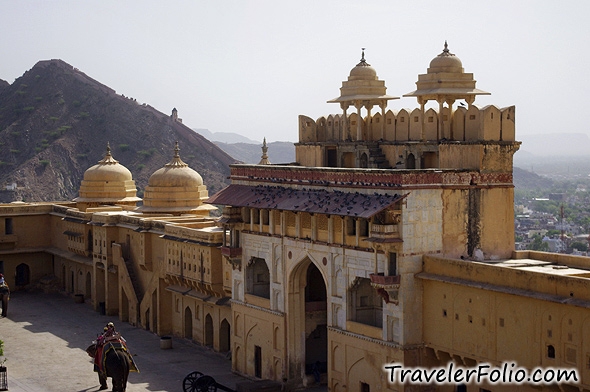
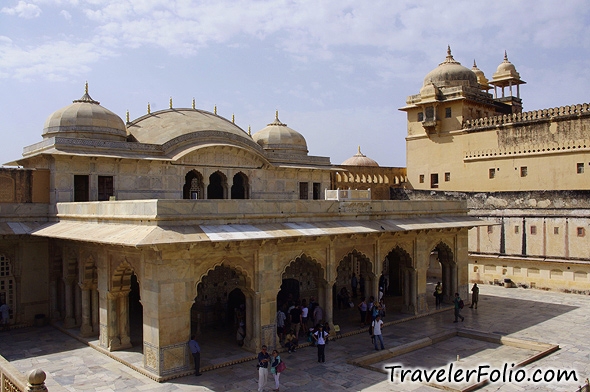
The Hall of Public Audience aka Diwan-i-Aam where the king would meet his officials and commoners.
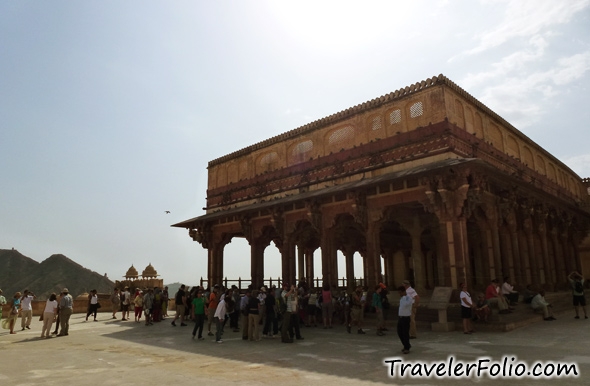
The colonnades of Diwan-i-Aam.
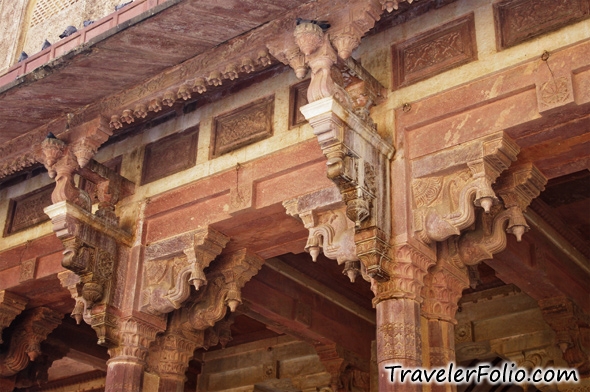

Beautiful inlay work with floral designs on the walls of Ganesh Pol.
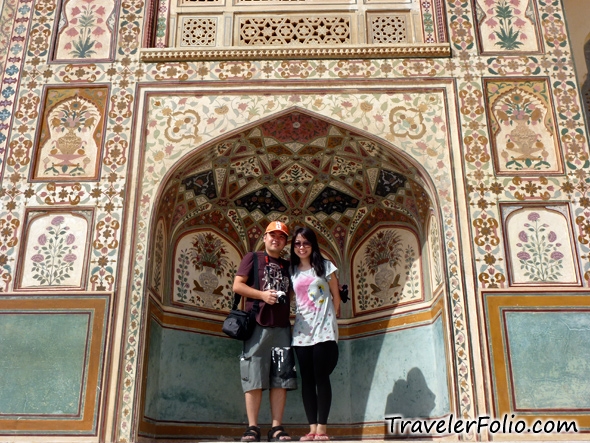
Commonly used in palaces and forts of Rajasthan, dome-shaped pavilions that look like umbrellas atop the buildings are known as Chhatris.

As tour buses are not allowed to drive up to Amber Fort, a popular way for tourists to reach the fort is by elephant ride.
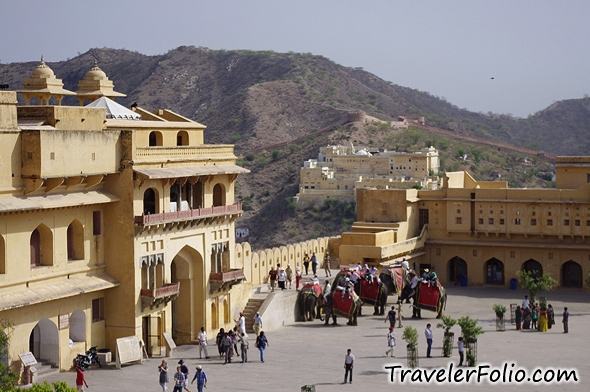

A bird’s-eye view of Amer town from Amer Palace.
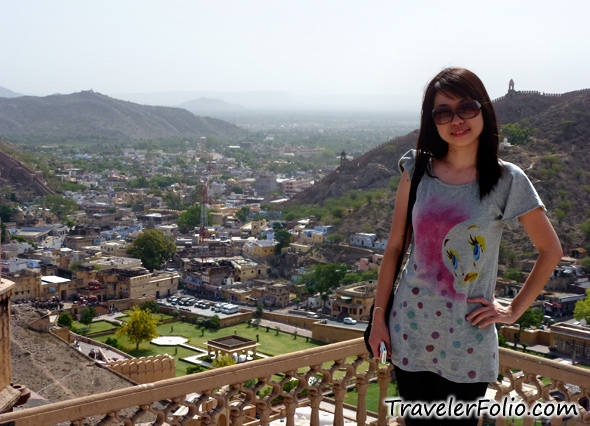
Amer town
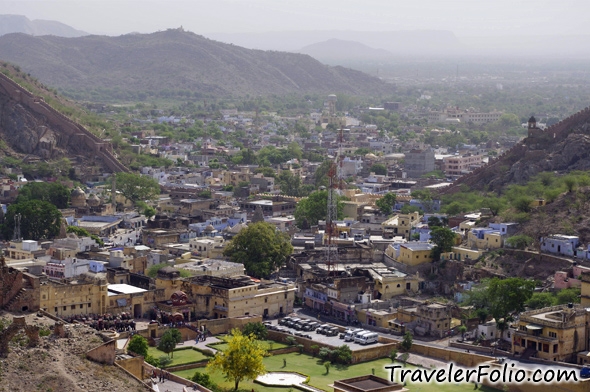

Maota Lake and Garden.
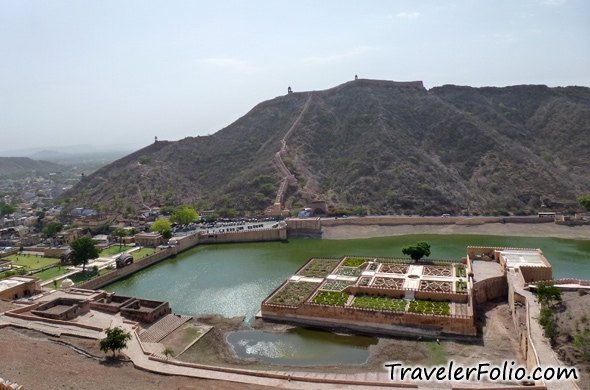
At the Palace of Versailles in France, the renowned Hall of Mirrors is flanked with huge mirrors. The Sheesh Mahal or Mirror Palace at Amber Fort are covered with mirror mosaics of convex shape which would glitter under flickering candle light. It must be really magical.
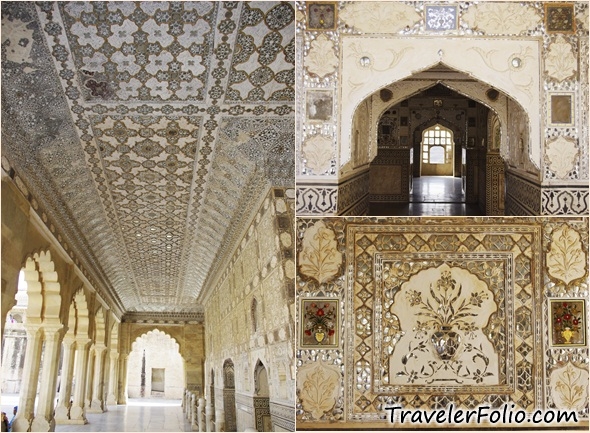
Right photo: I was standing in front of a mirror and the guide took this photo while standing at an angle where he won’t be seen in the mirror.

At the mirror palace, this magic flower fresco was intricately carved out of marble. Cover up parts of the fresco and you will see a fish tail, an elephant’s trunk, a lotus, a lion’s tail, a scorpion, a cobra and a corn on the cob.
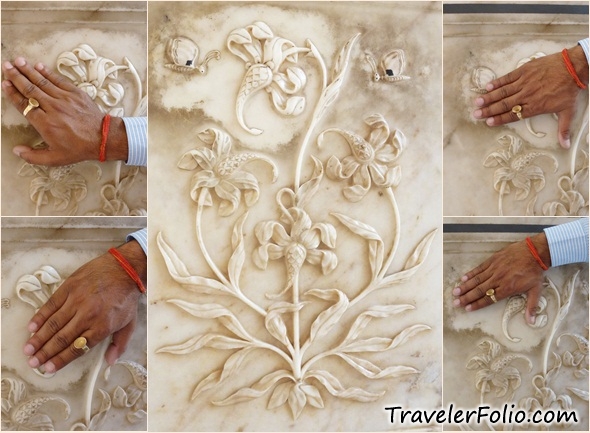
Peeps! From behind the privacy of the lattice screens, ladies of the royal household could watch the daily activities of the streets and public halls without being seen.
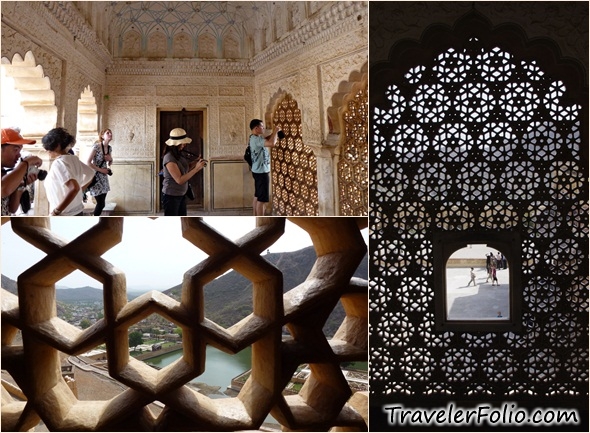
Courtyard
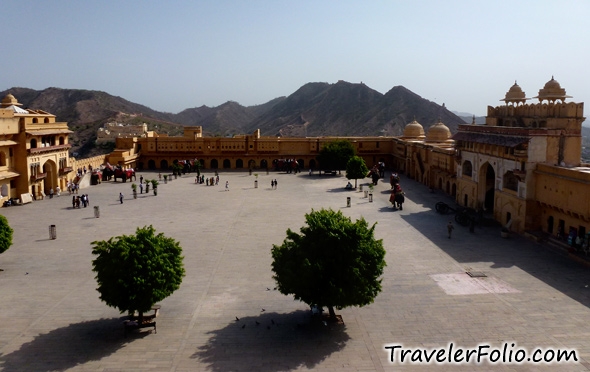
Photos taken at the Amber Palace. Right: Jaigarh Fort is located above Amber Fort.
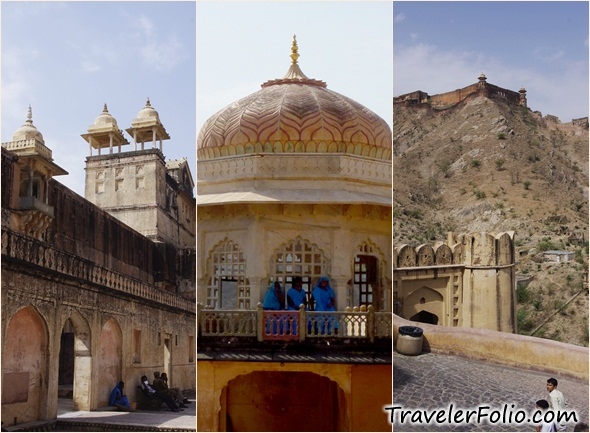
This is part of the palace complex where the Maharaja built 12 apartments for each of his 12 wives. How he managed so many wives? Well, according to our guide, they were not allowed to talk to each other but they could do so at a separate apartment where one person would record their conversation and submit it to the Maharaja!
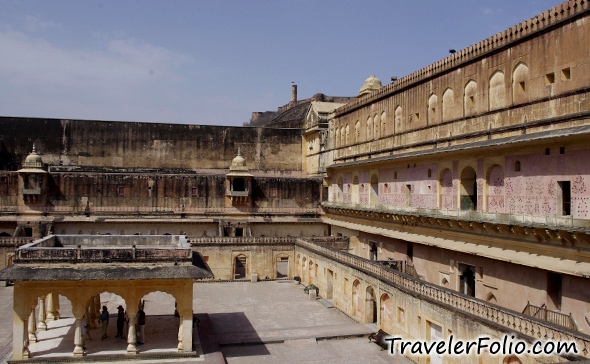
One of the Maharaja’s wives’ apartments.
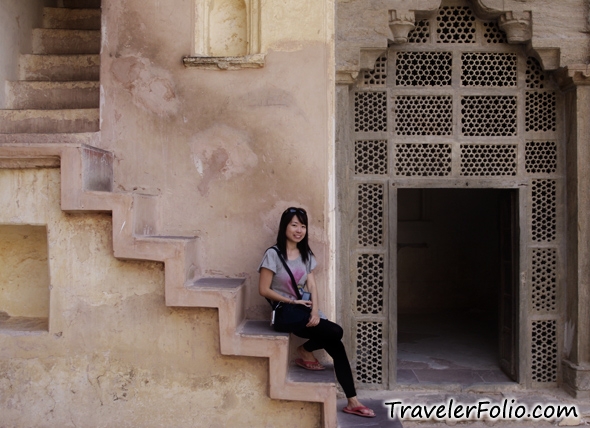
Typically used in Mughal and Rajasthani architecture, the overhanging enclosed balcony, a jharokha, allowed the ladies in purdah to observe the activities outside.
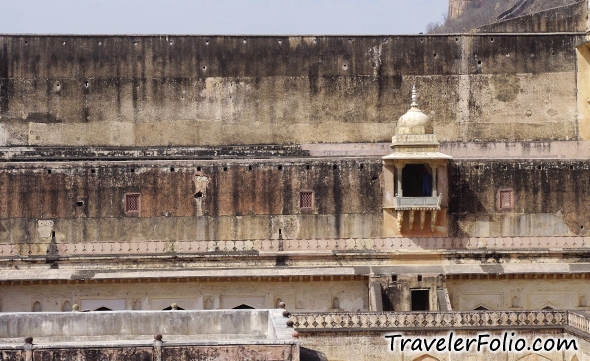
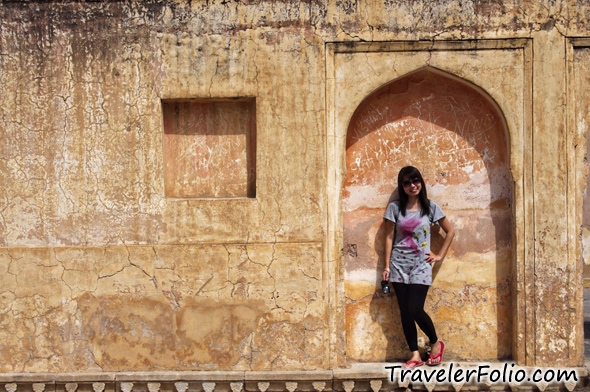
Right: The Pleasure Palace with a classic Mughal garden.
To keep the palace cooled in summer, the arched openings of the palace were covered with moistened screens woven with aromatic grass. Air passing through the moistened screens was cooled and the fragrance of the grass was carried into the chambers.
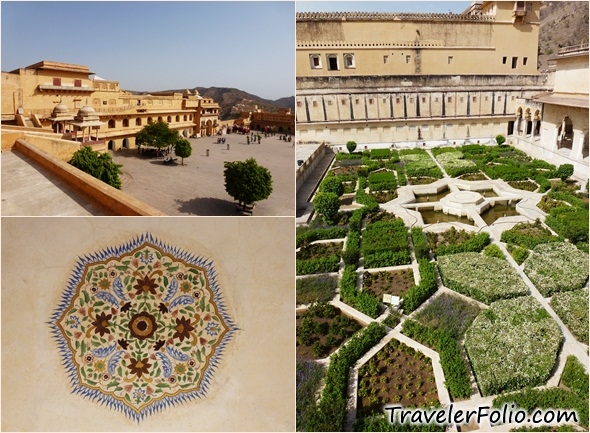
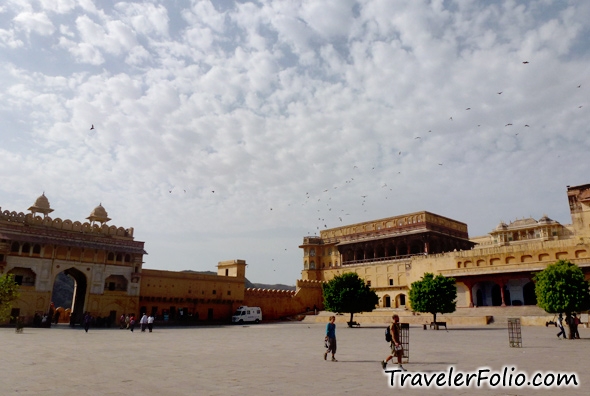
Framing the Hall of Public Audience aka Diwan-i-Aam.
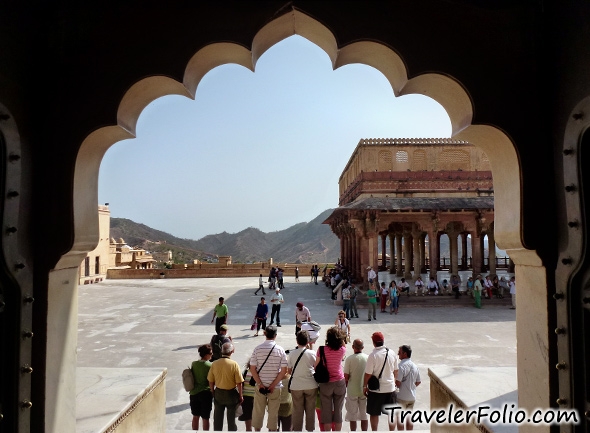
Amber town and Aravalli range of hills.

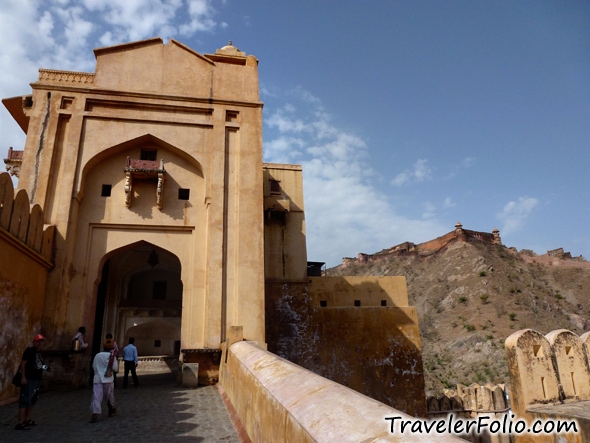
The walls of red sandstone that lead to Jaigarh Fort. Jaigarh Fort and Amber Fort are linked by hidden passages.
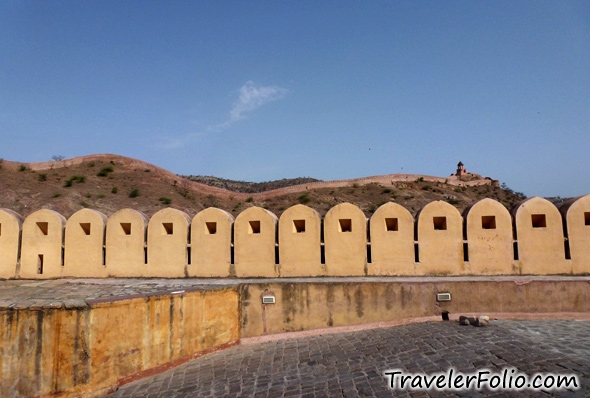
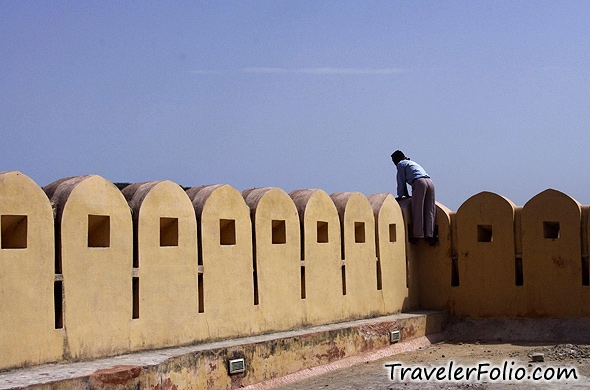
You can see Jaigarh Fort from Amber Fort. It houses the world’s largest cannon on wheels. We visited the Jaigarh Fort too.
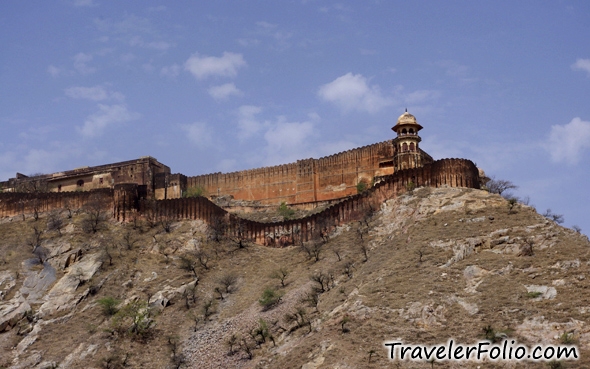
The snake charmers at Amber Fort.

Public toilets at Amber Fort. Free of charge.
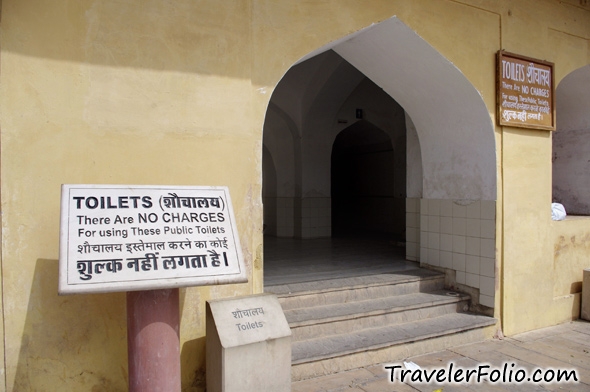
Ways to reach Amber Fort: by elephant ride, jeep, car, public bus or walking.
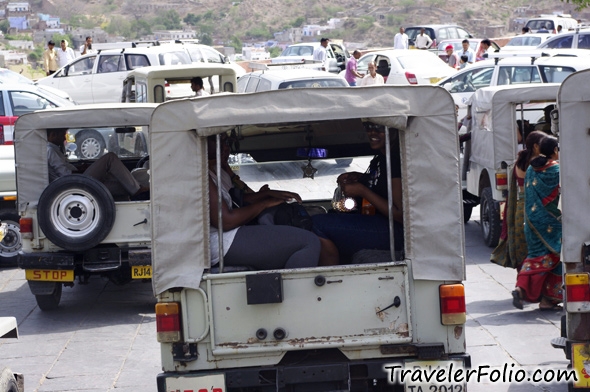
Souvenir hawkers
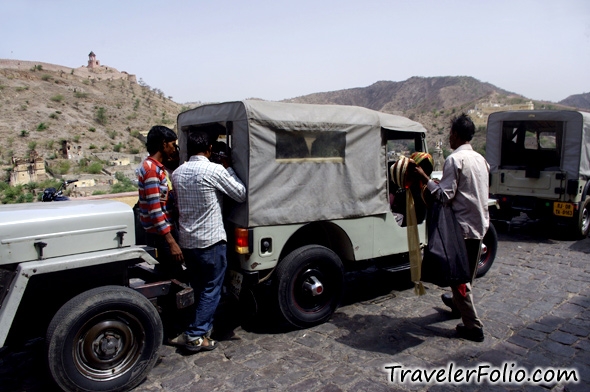
An elephant ride to Amber Fort.
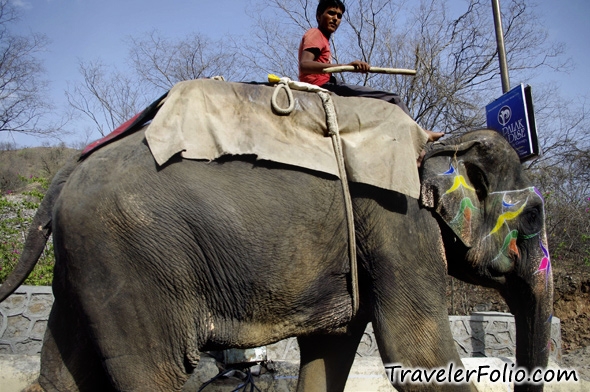
Auto rickshaws near Amber Fort. They can’t take you to the entrance of the fort.
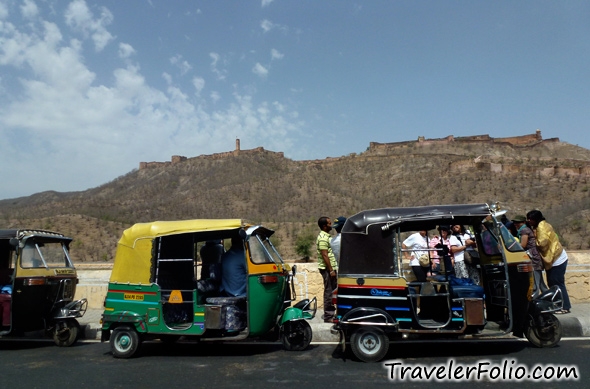
Pot balancing!

Visitor Information on Amber Fort
Opening hours: 8am to 6pm
Get a composite entry ticket at INR300 for overseas visitor. This includes admission to Amber Fort, Nahargarh Fort, Hawa Mahal, Albert Hall and Jantar-Mantar.
More updates on Incredible India! Read all posts on Jaipur | India.

Amazing place. I heard of Rajasthan. It’s beautiful and exotic.
@Joel it is! wish we had more time there.
I really need to go there soon, great report and pictures.
Yes it is !!!!
you’d love to be here 🙂
What a huge palace, it is, right?! I particularly loved the Mirror Palace; just gorgeous!
I can’t believe how few visitors there appear to be, looking at your pictures. When we were there, there were people everywhere!!!